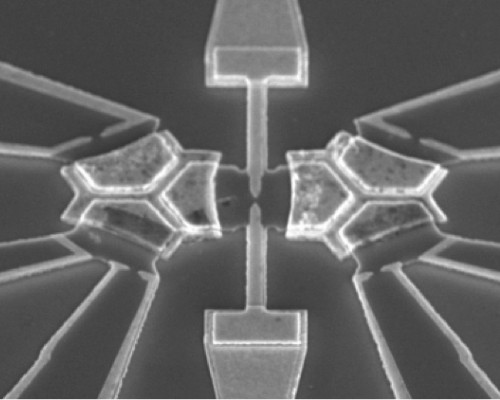 Physicists have invented a new type of analogue quantum computer that can tackle hard physics problems that the most powerful digital supercomputers cannot solve.
Physicists have invented a new type of analogue quantum computer that can tackle hard physics problems that the most powerful digital supercomputers cannot solve.
New research published in Nature Physics by collaborating scientists from Stanford University in the USA and University College Dublin (UCD) in Ireland has shown that a novel type of highly-specialized analogue computer, whose circuits feature quantum components, can solve problems from the cutting edge of quantum physics that were previously beyond reach. When scaled up, such devices may be able to shed light on some of the most important unsolved problems in physics.
For example, scientists and engineers have long wanted to gain a better understanding of superconductivity, because existing superconducting materials – such as those used in MRI machines, high speed train and long-distance energy-efficient power networks – currently operate only at extremely low temperatures, limiting their wider use. The holy grail of materials science is to find materials that are superconducting at room temperature, which would revolutionize their use in a host of technologies.
Dr Andrew Mitchell (right) is Director of the UCD Centre for Quantum Engineering, Science, and Technology (C-QuEST), a theoretical physicist at UCD School of Physics and a co-author of the paper. He said: “Certain problems are simply too complex for even the fastest digital classical computers to solve. The accurate simulation of complex quantum materials such as the high-temperature superconductors is a really important example – that kind of computation is far beyond current capabilities because of the exponential computing time and memory requirements needed to simulate the properties of realistic models.
“However, the technological and engineering advances driving the digital revolution have brought with them the unprecedented ability to control matter at the nanoscale. This has enabled us to design specialised analogue computers, called ‘Quantum Simulators,’ that solve specific models in quantum physics by leveraging the inherent quantum mechanical properties of its nanoscale components. While we have not yet been able to build an all-purpose programmable quantum computer with sufficient power to solve all of the open problems in physics, what we can now do is build bespoke analogue devices with quantum components that can solve specific quantum physics problems.”
The architecture for these new quantum devices involves hybrid metal-semiconductor components incorporated into a nanoelectronic circuit, devised by researchers at Stanford, UCD and the Department of Energy's SLAC National Accelerator Laboratory (located at Stanford). Stanford’s Experimental Nanoscience Group, led by Professor David Goldhaber-Gordon, built and operated the device, while the theory and modelling was done by Dr Mitchell at UCD.
Prof Goldhaber-Gordon, who is a researcher with the Stanford Institute for Materials and Energy Sciences, said: "We're always making mathematical models that we hope will capture the essence of phenomena we’re interested in, but even if we believe they're correct, they're often not solvable in a reasonable amount of time."
With a Quantum Simulator, "we have these knobs to turn that no one's ever had before," Prof Goldhaber-Gordon said.
WHY ANALOGUE?
The essential idea of these analogue devices, Goldhaber-Gordon said, is to build a kind of hardware analogy to the problem you want to solve, rather than writing some computer code for a programmable digital computer. For example, say that you wanted to predict the motions of the planets in the night sky and the timing of eclipses. You could do that by constructing a mechanical model of the solar system, where someone turns a crank, and rotating interlocking gears represent the motion of the moon and planets. In fact, such a mechanism was discovered in an ancient shipwreck off the coast of a Greek island dating back more than 2000 years. This device can be seen as a very early analogue computer.
Not to be sniffed at, analogous machines were used even into the late 20th century for mathematical calculations that were too hard for the most advanced digital computers at the time.
But to solve quantum physics problems, the devices need to involve quantum components. The new Quantum Simulator architecture involves electronic circuits with nanoscale components whose properties are governed by the laws of quantum mechanics. Importantly, many such components can be fabricated, each one behaving essentially identically to the others. This is crucial for analogue simulation of quantum materials, where each of the electronic components in the circuit is a proxy for an atom being simulated, and behaves like an ‘artificial atom’. Just as different atoms of the same type in a material behave identically, so too must the different electronic components of the analogue computer.
The new design therefore offers a unique pathway for scaling up the technology from individual units to large networks capable of simulating bulk quantum matter. Furthermore, the researchers showed that new microscopic quantum interactions can be engineered in such devices. The work is a step towards developing a new generation of scalable solid-state analogue quantum computers.

Micrograph image of the new Quantum Simulator, which features two coupled nano-sized metal-semiconductor components embedded in an electronic circuit.